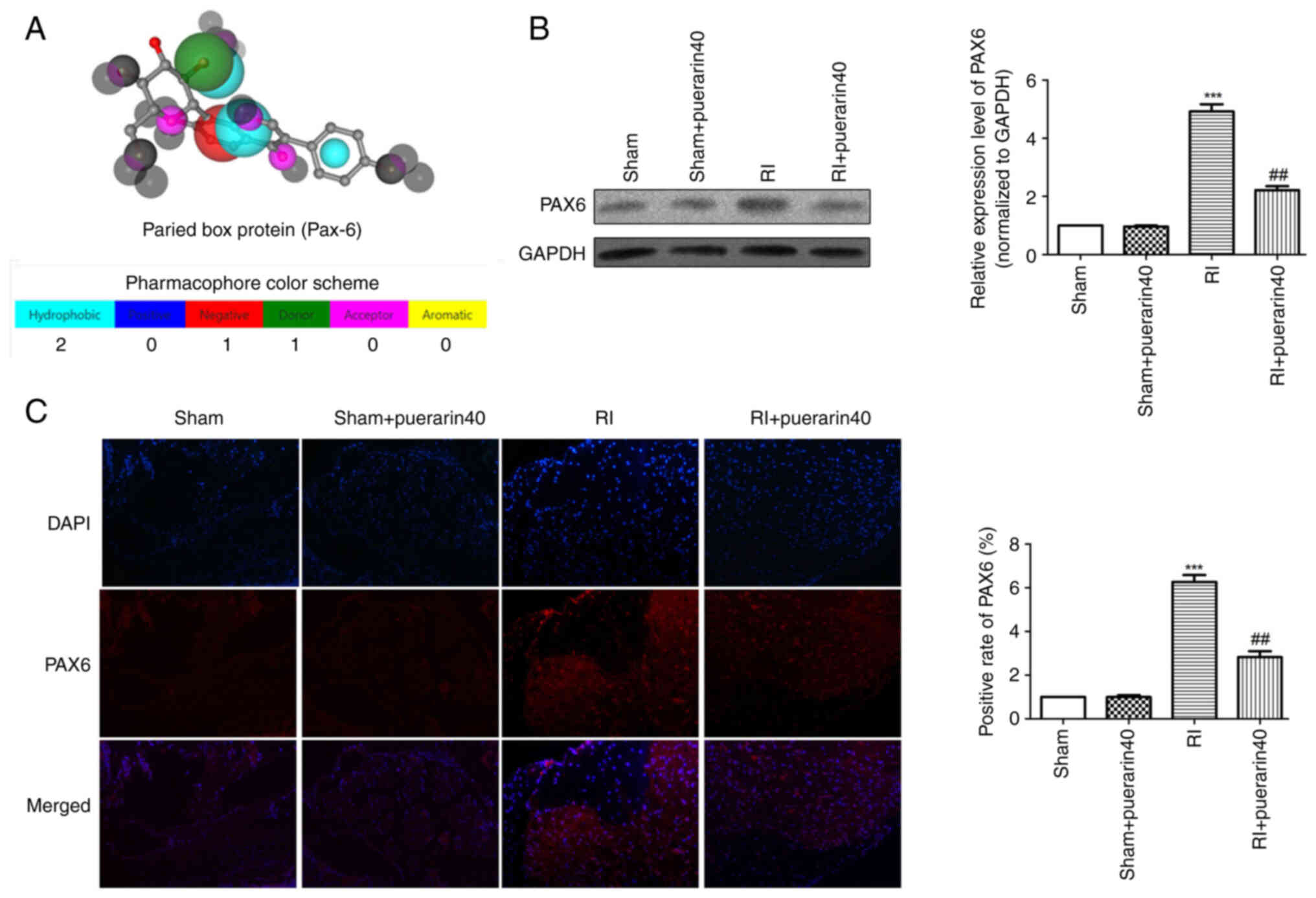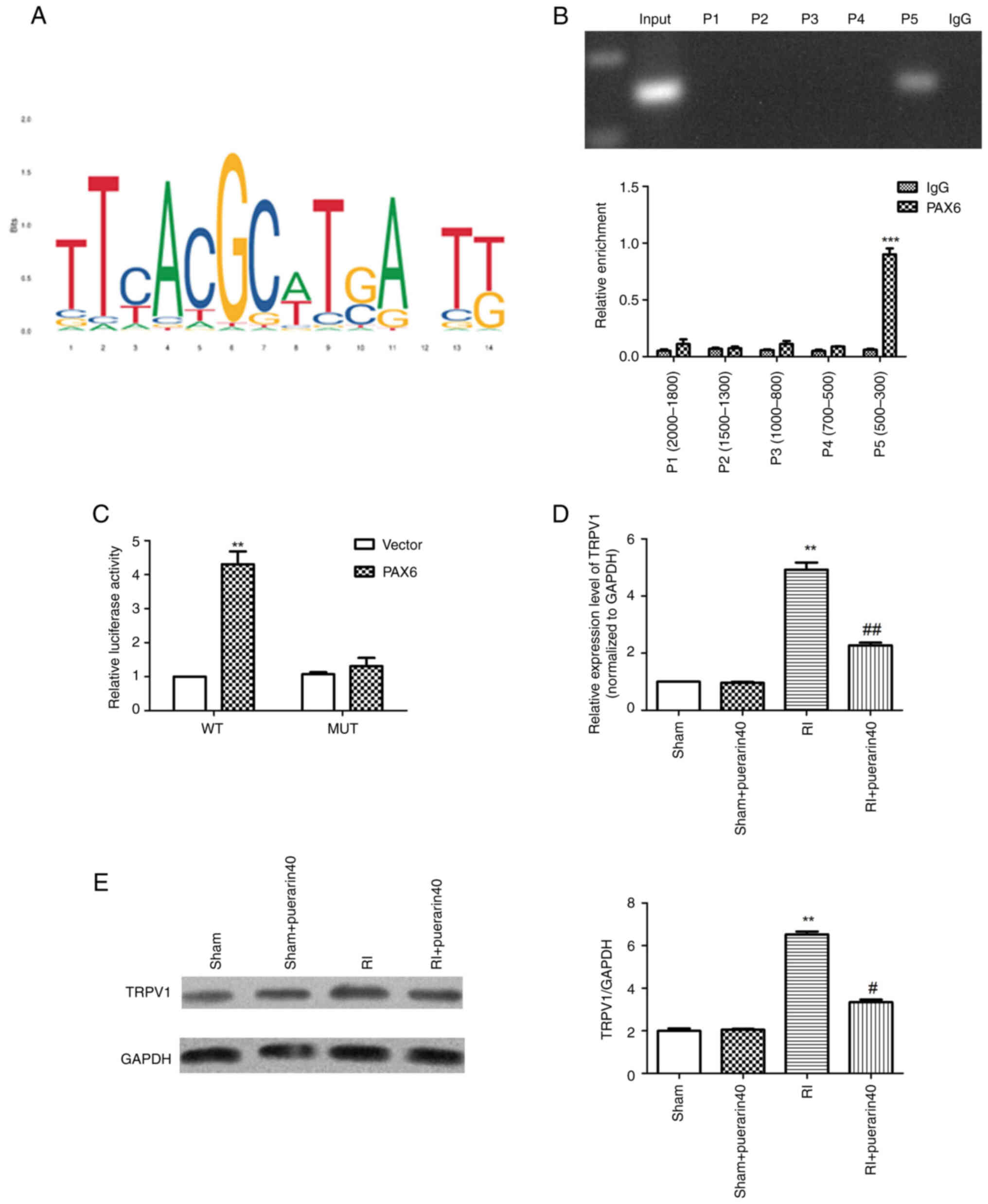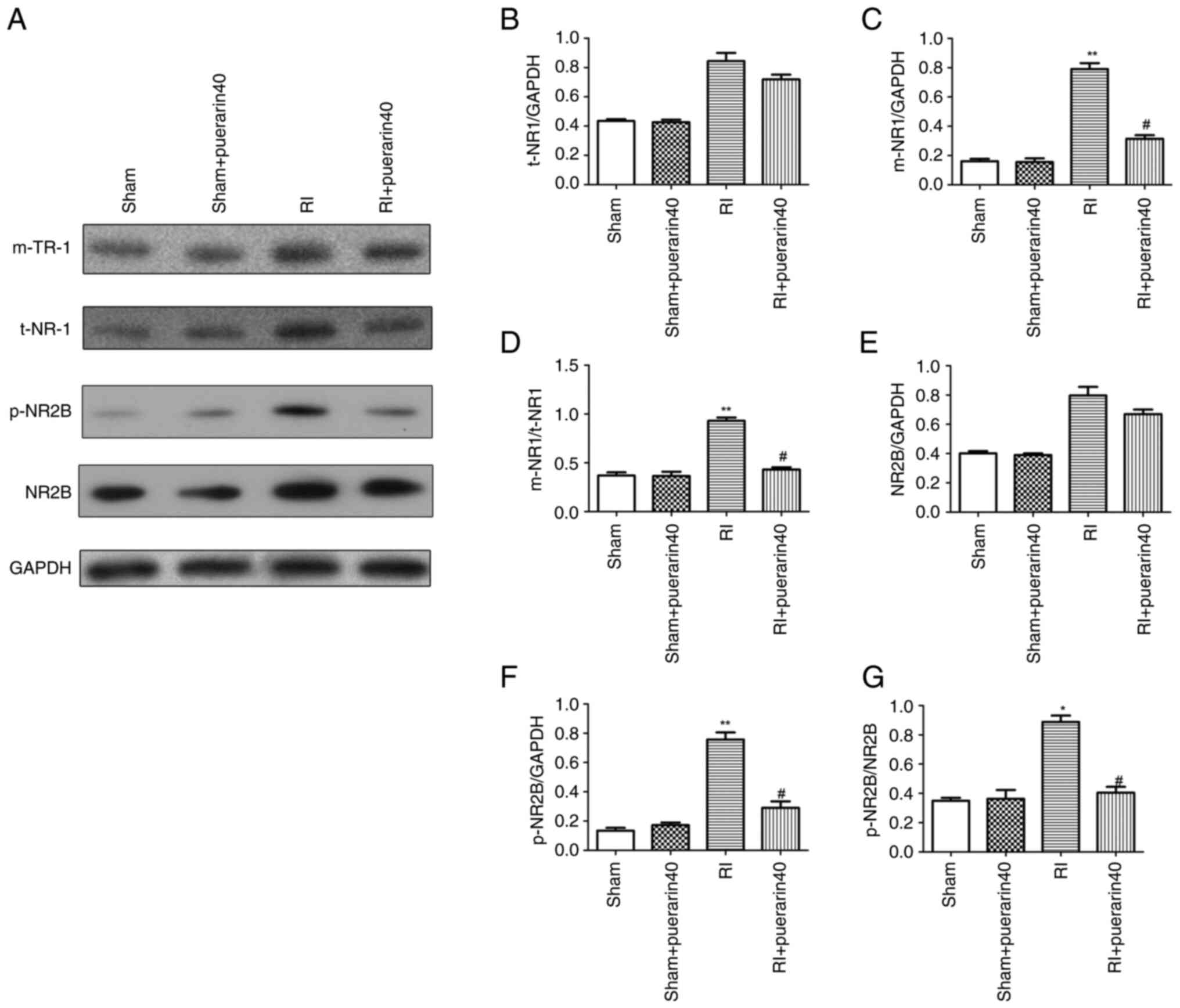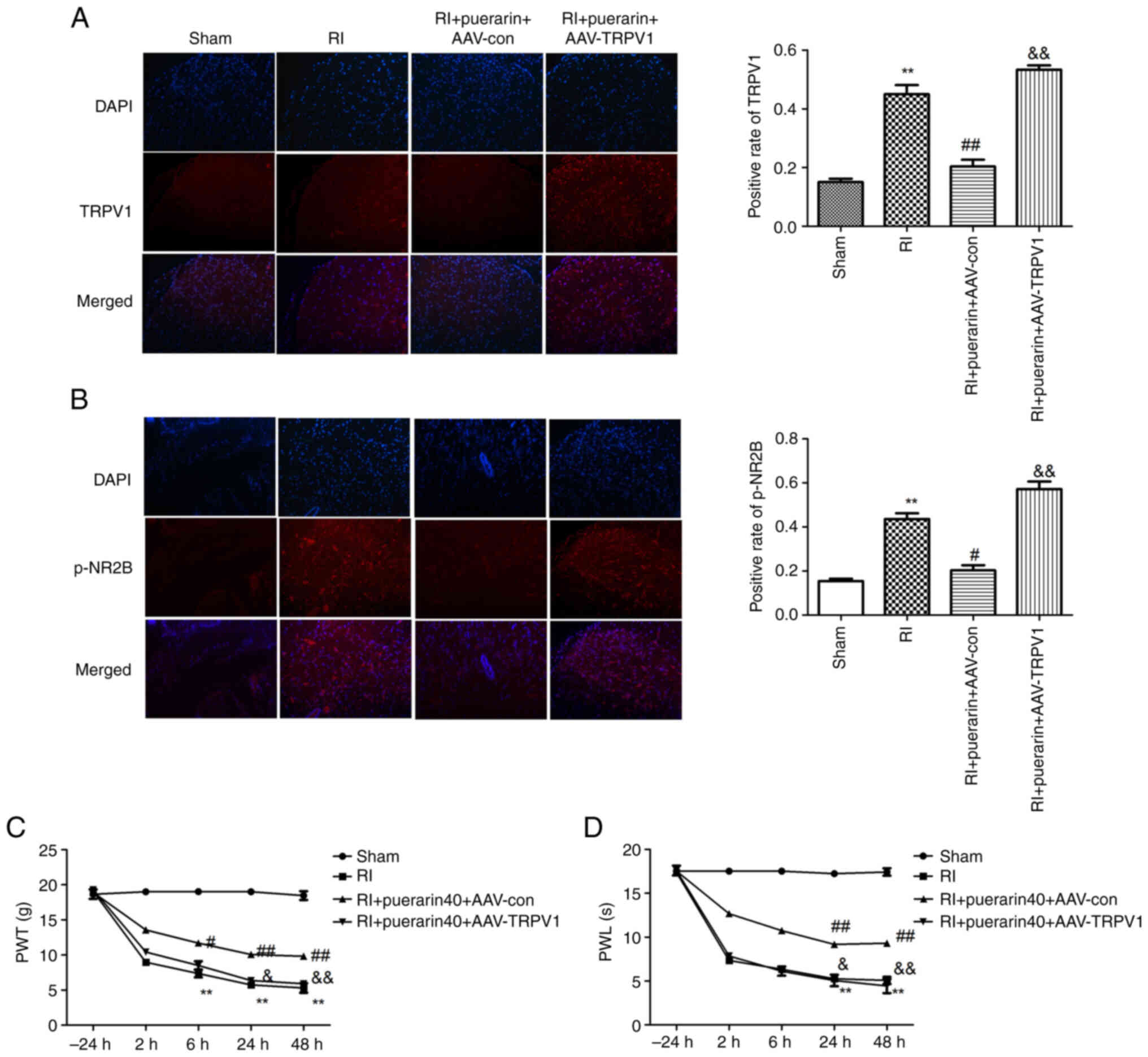|
1
|
Fallon MT: Neuropathic pain in cancer. Br
J Anaesth. 111:105–111. 2013. View Article : Google Scholar : PubMed/NCBI
|
|
2
|
Smith EM, Pang H, Cirrincione C, Fleishman
S, Paskett ED, Ahles T, Bressler LR, Fadul CE, Knox C,
Le-Lindqwister N, et al: Effect of duloxetine on pain, function,
and quality of life among patients with chemotherapy-induced
painful peripheral neuropathy: A randomized clinical trial. JAMA.
309:1359–1367. 2013. View Article : Google Scholar : PubMed/NCBI
|
|
3
|
Azzam A, McDonald J and Lambert D: Hot
topics in opioid pharmacology: Mixed and biased opioids. Br J
Anaesth. 122:e136–e145. 2019. View Article : Google Scholar : PubMed/NCBI
|
|
4
|
Rivosecchi RM, Rice MJ, Smithburger PL,
Buckley MS, Coons JC and Kane-Gill SL: An evidence based systematic
review of remifentanil associated opioid-induced hyperalgesia.
Expert Opin Drug Saf. 13:587–603. 2014. View Article : Google Scholar : PubMed/NCBI
|
|
5
|
Han Q, Kim YH, Wang X, Liu D, Zhang ZJ,
Bey AL, Lay M, Chang W, Berta T, Zhang Y, et al: SHANK3 deficiency
impairs heat hyperalgesia and TRPV1 signaling in primary sensory
neurons. Neuron. 92:1279–1293. 2016. View Article : Google Scholar : PubMed/NCBI
|
|
6
|
Roberts LA and Connor M: TRPV1 antagonists
as a potential treatment for hyperalgesia. Recent Pat CNS Drug
Discov. 1:65–76. 2006. View Article : Google Scholar : PubMed/NCBI
|
|
7
|
Katz B, Zaguri R, Edvardson S, Maayan C,
Elpeleg O, Lev S, Davidson E, Peters M, Kfir-Erenfeld S, Berger E,
et al: Nociception and pain in humans lacking a functional TRPV1
channel. J Clin Invest. 133:e1535582023. View Article : Google Scholar : PubMed/NCBI
|
|
8
|
Song C, Liu P, Zhao Q, Guo S and Wang G:
TRPV1 channel contributes to remifentanil-induced postoperative
hyperalgesia via regulation of NMDA receptor trafficking in dorsal
root ganglion. J Pain Res. 12:667–677. 2019. View Article : Google Scholar : PubMed/NCBI
|
|
9
|
Liu M, Liao K, Yu C, Li X, Liu S and Yang
S: Puerarin alleviates neuropathic pain by inhibiting
neuroinflammation in spinal cord. Mediators Inflamm.
2014:4859272014. View Article : Google Scholar : PubMed/NCBI
|
|
10
|
Xu C, Li G, Gao Y, Liu S, Lin J, Zhang J,
Li X, Liu H and Liang S: Effect of puerarin on P2X3 receptor
involved in hyperalgesia after burn injury in the rat. Brain Res
Bull. 80:341–346. 2009. View Article : Google Scholar : PubMed/NCBI
|
|
11
|
Wang C, Li Y, Wang H, Xie K, Shu R, Zhang
L, Hu N, Yu Y and Wang G: Inhibition of DOR prevents remifentanil
induced postoperative hyperalgesia through regulating the
trafficking and function of spinal NMDA receptors in vivo and in
vitro. Brain Res Bull. 110:30–39. 2015. View Article : Google Scholar : PubMed/NCBI
|
|
12
|
Livak KJ and Schmittgen TD: Analysis of
relative gene expression data using real-time quantitative PCR and
the 2(−Delta Delta C(T)) Method. Methods. 25:402–408. 2001.
View Article : Google Scholar : PubMed/NCBI
|
|
13
|
Dalmau J, Furneaux HM, Gralla RJ, Kris MG
and Posner JB: Detection of the anti-Hu antibody in the serum of
patients with small cell lung cancer-a quantitative western blot
analysis. Ann Neurol. 27:544–552. 1990. View Article : Google Scholar : PubMed/NCBI
|
|
14
|
Xiao L, Dai Z, Tang W, Liu C and Tang B:
Astragaloside IV Alleviates Cerebral Ischemia-Reperfusion Injury
through NLRP3 Inflammasome-Mediated Pyroptosis Inhibition via
Activating Nrf2. Oxid Med Cell Longev. 2021:99255612021. View Article : Google Scholar : PubMed/NCBI
|
|
15
|
Lai W and Yu L: Insulin-like growth factor
1 ameliorates pre-eclampsia by inhibiting zinc finger E-box binding
homeobox 1 by up-regulation of microRNA-183. J Cell Mol Med.
27:1179–1191. 2023. View Article : Google Scholar : PubMed/NCBI
|
|
16
|
Lee M, Silverman SM, Hansen H, Patel VB
and Manchikanti L: A comprehensive review of opioid-induced
hyperalgesia. Pain Physician. 14:145–161. 2011. View Article : Google Scholar : PubMed/NCBI
|
|
17
|
Santoni A, Mercadante S and Arcuri E:
Chronic cancer and non-cancer pain and opioid-induced hyperalgesia
share common mechanisms: Neuroinflammation and central
sensitization. Minerva Anestesiol. 87:210–222. 2021. View Article : Google Scholar : PubMed/NCBI
|
|
18
|
Zhou B, Zhang J, Chen Y, Liu Y, Tang X,
Xia P, Yu P and Yu S: Puerarin protects against sepsis-induced
myocardial injury through AMPK-mediated ferroptosis signaling.
Aging (Albany NY). 14:3617–3632. 2022. View Article : Google Scholar : PubMed/NCBI
|
|
19
|
Meng F, Guo B, Ma YQ, Li KW and Niu FJ:
Puerarin: A review of its mechanisms of action and clinical studies
in ophthalmology. Phytomedicine. 107:1544652022. View Article : Google Scholar : PubMed/NCBI
|
|
20
|
Zhang L: Pharmacokinetics and drug
delivery systems for puerarin, a bioactive flavone from traditional
Chinese medicine. Drug Deliv. 26:860–869. 2019. View Article : Google Scholar : PubMed/NCBI
|
|
21
|
Xiao L, Zhong M, Huang Y, Zhu J, Tang W,
Li D, Shi J, Lu A, Yang H, Geng D, et al: Puerarin alleviates
osteoporosis in the ovariectomy-induced mice by suppressing
osteoclastogenesis via inhibition of TRAF6/ROS-dependent MAPK/NF-κB
signaling pathways. Aging (Albany NY). 12:21706–21729. 2020.
View Article : Google Scholar : PubMed/NCBI
|
|
22
|
Zhang Y, Yang X, Ge X and Zhang F:
Puerarin attenuates neurological deficits via Bcl-2/Bax/cleaved
caspase-3 and Sirt3/SOD2 apoptotic pathways in subarachnoid
hemorrhage mice. Biomed Pharmacother. 109:726–733. 2019. View Article : Google Scholar : PubMed/NCBI
|
|
23
|
Fu R, Zhang Y, Guo Y, Zhang Y, Xu Y and
Chen F: Digital gene expression analysis of the pathogenesis and
therapeutic mechanisms of ligustrazine and puerarin in rat
atherosclerosis. Gene. 552:75–80. 2014. View Article : Google Scholar : PubMed/NCBI
|
|
24
|
Zhang XL, Cao XY, Lai RC, Xie MX and Zeng
WA: Puerarin Relieves Paclitaxel-Induced Neuropathic Pain: The Role
of Nav1.8 β1 subunit of sensory neurons. Front
Pharmacol. 9:15102019. View Article : Google Scholar : PubMed/NCBI
|
|
25
|
Wullimann ME and Rink E: Detailed
immunohistology of Pax6 protein and tyrosine hydroxylase in the
early zebrafish brain suggests role of Pax6 gene in development of
dopaminergic diencephalic neurons. Brain Res Dev Brain Res.
131:173–191. 2001. View Article : Google Scholar : PubMed/NCBI
|
|
26
|
Osumi N, Shinohara H, Numayama-Tsuruta K
and Maekawa M: Concise review: Pax6 transcription factor
contributes to both embryonic and adult neurogenesis as a
multifunctional regulator. Stem Cells. 26:1663–1672. 2008.
View Article : Google Scholar : PubMed/NCBI
|
|
27
|
Pires SF, de Barros JS, da Costa SS, de
Oliveira Scliar M, Van Helvoort Lengert A, Boldrini É, da Silva
SRM, Tasic L, Vidal DO, Krepischi ACV and Maschietto M: DNA
methylation patterns suggest the involvement of DNMT3B and TET1 in
osteosarcoma development. Mol Genet Genomics. 298:721–733. 2023.
View Article : Google Scholar : PubMed/NCBI
|
|
28
|
Rowan MP, Szteyn K, Doyle AP, Gomez R,
Henry MA and Jeske NA: β-arrestin-2-biased agonism of delta opioid
receptors sensitizes transient receptor potential vanilloid type 1
(TRPV1) in primary sensory neurons. Mol Pain. 10:502014. View Article : Google Scholar : PubMed/NCBI
|
|
29
|
Wu Y, Chen J and Wang R: Puerarin
suppresses TRPV1, calcitonin gene-related peptide and substance P
to prevent paclitaxel-induced peripheral neuropathic pain in rats.
Neuroreport. 30:288–294. 2019. View Article : Google Scholar : PubMed/NCBI
|
|
30
|
Gao Y, Zhou S, Pan Y, Gu L, He Y and Sun
J: Wnt3a inhibitor attenuates remifentanil-Induced hyperalgesia
via downregulating spinal NMDA receptor in rats. J Pain Res.
13:1049–1058. 2020. View Article : Google Scholar : PubMed/NCBI
|














